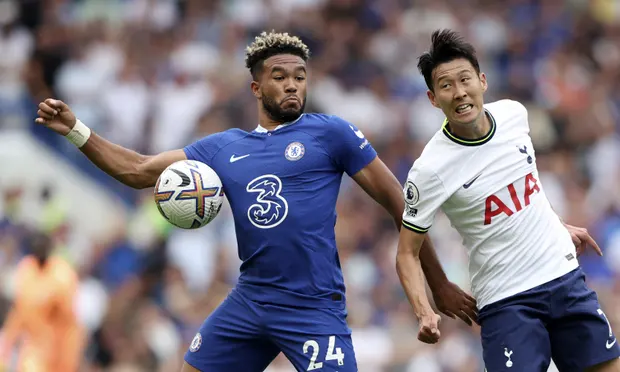Stop thinking about rigid formations: football is now far too dynamic
Stop thinking about rigid formations: football is now far too dynamic: Everyone, from casual observers to expert analysts to players and coaches, continuously checks the starting lineups and defensive and offensive formations before each game.
There will be discussions on how a tactical war might play out between two teams, one using a 4-4-2 formation and the other a 3-5-2 one, but in today’s game, things are much more complex, and players do not adhere to a rigid system.
They each play a specific role within the larger framework.
Today’s systems are all dynamic hybrids that defy simple categorization into static structures. Based on their formation at kickoff, it is not indicative of how a team will perform over the next 90 minutes.
NFL
The top levels of football are increasingly like the NFL in that coaches have elaborate game plans for the various game stages.
Each player on the field will know where they should be when their team has possession of the ball to find the most dangerous attackers at the other end.
The recent Chelsea–Tottenham game was the best recent example I’ve seen of fluidity in gameplay.
Statement
When playing with a back five, I thought Chelsea looked fantastic, especially with Reece James on the right side of three central defenders and Ruben Loftus-Cheek on the right side.
James’s job description called for him to stick close to Son Heung-min, and if the South Korean moved into the middle of the field, James would follow him there.
James sometimes played right wing-back with Loftus-Cheek in the back three, central midfielder at others, and right back on other instances.
Together with Loftus-Cheek, he was juggling three or four tasks at once. All of these are examples of the many facets of modern football.
Under Emma Hayes’s leadership, every aspect of Chelsea Women follows the same guiding principle. On Sunday against Liverpool, they displayed nimble movement and rotation.
Strikers shifted to left back while central midfielders switched to the left.
There was a lot of switching around that could have been excessive. Perhaps they were just trying various strategies to see how they would work during the season.
They were getting used to the requisite fluidity levels for the first time in their maiden game.
Many teams use a 4–5–2 defense and a 5–6–1 offense.
MAN
The era of Pep Guardiola at Manchester City has provided numerous examples. His four-man defense and the six-man offense have evolved from a single central midfielder-come-fullback to a more common sighting of two such players.
Players like Kevin De Bruyne defy categorization to a single position. He tends to float to places where he can do the greatest good. It’s tough to pin down exactly what he does.
A hybrid attacking system allows him to move into the best places at the best times, whether it be out wide or into the centre, to make the most of the wonderful attributes he possesses.
This is advanced football theory, and it will take excellent instruction to get the players to grasp it. The most effective trainers are those who can break complex concepts down into manageable chunks.
Mikel Arteta’s ability to explain complex concepts with simple drawings and explanations is well-known to viewers of the recent documentary on Arsenal.
Granit Xhaka has moved much further up the field this season for Arsenal. He has done so because the players behind him have done the same.
Although Xhaka has traditionally been viewed as a defensive-minded midfielder, he is beginning to show his worth in more offensive roles.
Heatmap
If you look at his heatmap, you’ll notice that Xhaka is much further up the pitch than the rest of the team. Arsenal starts in a back four but switches to a three when they have the ball, with either Oleksandr Zinchenko or Ben White moving into midfield.
Sometimes both fullbacks may rise, and Thomas Partey will shift back to cover as a third central defender.
To meet the challenges they face, players need to have the strong mental fortitude and keen tactical awareness, and their knowledge plays a crucial role.
The expanded and crucial use of statistics explains these specific shifts in approach. Coaches now have access to many data and analysts to assist them in making sense of it all.
Different things can be done by tactic and data coaches once their athletes are in better shape. They use data visualization tools like heatmaps and statistics to determine the next steps.
Managers identify the opponent’s vulnerabilities and design specific roles for bench players to exploit those openings.
If, for whatever reason, your opponent tends to be vulnerable on the right side of the field, adding an extra player who is specialized for that side could be crucial.
Statistics
Because statistics are embedded in sports, many retired football players miss receiving feedback. We base our decisions entirely on numbers, including sprinting times, pass attempts, pass completion percentages, fouls committed, shoots attempted, and goals against.
When you don’t have it regularly, you realize how much you need it.
Soccer is a constantly evolving and improving ecosystem.
Even strict formations aren’t the only option for tactics. Statistics in football can help you capitalize on your opponent’s strengths and flaws. This is a common practice in the most successful companies.
Read More: The Glazer family is thinking about selling a small share of the Premier League Club.

